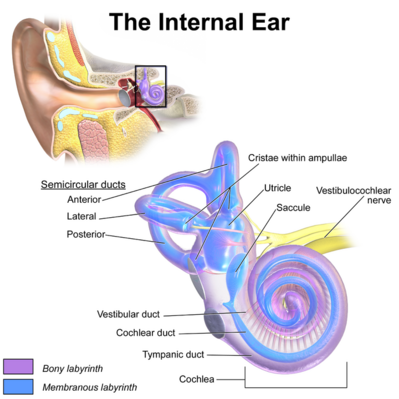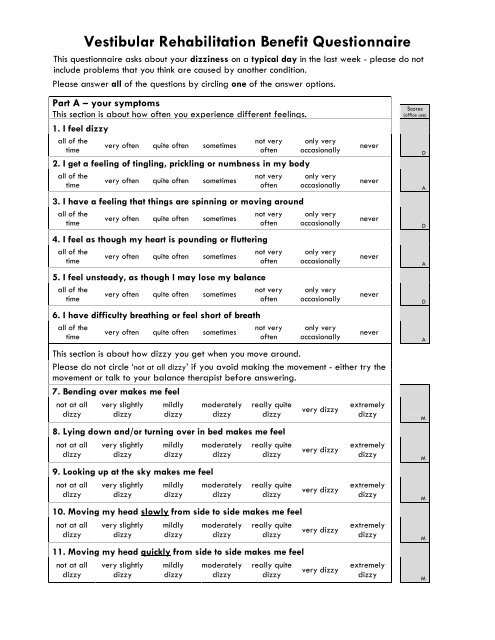vestibular rehab exercises pdf nhs
Vestibular rehabilitation therapy VRT is an exercise-based program for reducing the symptoms of disequilibrium and dizziness associated with vestibular pathology disease or disorder. What is vestibular rehabilitation.

Pdf Effects Of Vestibular Rehabilitation In The Elderly A Systematic Review
Be careful when you start to move after you have completed the exercises.

. If the balance organ is not working properly you can feel dizzy or unsteady. These exercises may provoke symptoms of dizziness or nausea. Vestibular Rehabilitation Exercises Level 2.
The management plan may include. Sitting first then when more confident standing. We recommend that you complete your exercises three times a day if possible.
Keeping head still move eyes left to right 3. Vestibular exercises merely stimulate the vestibular apparatus. It helps to retrain the brains ability to adjust the balance problem and is known as compensation and adaption.
If too dizzy slow eye movement down slightly. Vestibular Rehabilitation often involves exercises to help the. Vestibular rehab exercises pdf nhs Friday May 6 2022.
To relieve this the brain must be helped to put this information together in a new way. Eye and head movement exercises. As they are designed to challenge your balance system you may feel some.
Vestibular rehab exercises pdf nhs Friday March 11 2022 Edit. Vestibular rehabilitation exercises A fact sheet for patients and carers Vestibular compensation Vestibular compensation is a process that allows the brain to regain balance control and minimise dizziness symptoms when there is damage to or an imbalance between the right and left vestibular organs balance organs in the inner ear. Within the vestibular or balance system.
The brain interprets information gained from the vestibular or balance system. The next set of exercises. Vestibular Rehabilitation I Cawthorne-Cooksey Vestibular Exercises Section A.
Eyes joints and the balance organ in the ear Vestibular Apparatus to make it easy to move around without dizziness. Vestibular compensation Vestibular compensation is a process that allows the brain to regain. Vestibular rehabilitation exercises are.
Vestibular rehabilitation exercises A fact sheet for patients and carers Vestibular compensation Vestibular compensation is a process that allows the brain to regain balance control and minimise dizziness symptoms when there is damage to or an imbalance between the right and left vestibular organs balance organs in the inner ear. Rest between each exercise. Work through these symptoms.
Exercises to. Some of the exercises might not provoke dizziness. Vestibular rehabilitation wwwuhcwnhsuk - 2 - From this assessment the audiologist will develop an individualised treatment plan that will include exercises to be performed both in the department and at home which combine specific head and body movements with eye exercises.
Extra Vestibular Rehabilitation Exercises Procedure Make sure you are seated safely before starting the exercises. Their use has been declining in recent years as the home Epley maneuver see below is considerably more effective. Your vestibular rehabilitation exercises are designed to make you experience mild.
The Brandt-Daroff exercises should be performed for two or three weeks and a suggested schedule is as follows Time exercise duration. Progress can be fast or slow and it may be 1-2 months before you notice the improvement. When there is an injury or abnormality in any portion of this system the brain must be retrained or taught to interpret correctly the information it receives.
Dont worry if you seem to be stuck at an exercise for a week or more. Let symptoms subside plus seconds with each repetition. Exercises l Make sure that you are in a safe environment before you start any of the exercises to reduce the risk of injury.
The purpose of these exercises is to build up a tolerance mechanism and the more diligently and regularly they are carried out the sooner the symptoms will disappear. This should be performed in three sets of five three times a day. Brandt-Daroff exercises These exercises are a method of treating Benign Paroxysmal Positional Vertigo BPPV.
Treatment may also include increasing. Repeat times per session. You may find it helpful to complete your exercises at specific times each day.
To enable this to work fully you will need to be dedicated to doing exercises regularly through. Slowlyquickly move head rightleft with eyes openclosed. Ad Browse Discover Thousands of Book Titles for Less.
Next move your head to look at the left target then the centre target then the right target. Exercises manoeuvres suitable for self management of positional vertigo. Vestibular rehabilitation exercises A fact sheet for patients and carers Vestibular compensation Vestibular compensation is a process that allows the brain to regain balance control and minimise dizziness symptoms when there is damage to or an imbalance between the right and left.
For safety standing exercises must be performed close to a counter or next to someone. Level 1 Eye movements head kept still a Look up then down. If an exercise does not cause dizziness you should move on to the next exercise.
It is important to complete your exercises this often every day. Focus on your index finger as you bring it from arms length away up to your nose then out again. Treatment strategies used in rehabilitation can also be beneficial for these.
They succeed in 95 of cases but more arduous than the Epley manoeuvre. You might find that your dizziness problems get worse for a few days after you start the exercises but you should persevere with them. Vestibular Rehabilitation is an exercise-based programme to encourage the nervous system to compensate for problems in the inner ear.
Following a thorough examination a specialist Physiotherapist will develop a personalised home exercise programme for you. Keeping the head still move eyes up and down 2. The exercises should be performed three times each day.
How difficult should my exercises feel. Please do all six movements 2-3 times each day. As a general rule you should build up gradually from one set of exercises to the next.
L All exercises should be performed slowly to begin with and gradually progress to faster movements. A common neuro-otological approach for managing such symptoms is to prescribe medication that suppresses vestibular function. Begin with exercise 1A.
Vestibular rehabilitation exercises This is a specific form of physiotherapy which may be suggested if your movements are very affected. Exercises demand concentration. Position tilt head down 30º.
L Exercises should be performed 3 times a day. Do sessions per day.

Introduction To Vestibular Rehabilitation Physiopedia

Vestibular Rehabilitation Giddiness Exercises Youtube

Vestibular Rehabilitation Rehabilitation Vestibular Rehabilitation Exercises Rehabilitation Therapy Rehabilitation

Vestibular Rehab Physio Vestibularp Twitter

Pin On Physical Therapy And Physical Therapy Assistant At F A Davis Company

Vestibular Neuronitis Vestibular Neuritis Conditioner Inner Ear

Wrist Exercises Mobilityexercises Wrist Exercises Hand Therapy Exercises Hand Therapy

Introduction To Vestibular Rehabilitation Physiopedia

Rehabilitation Exercises Physical Therapy Exercises Hand Therapy

Vestibular Neuronitis Vestibular Neuritis Conditioner Inner Ear

Vestibular Rehabilitation Benefit Questionnaire

Vestibular Rehabilitation Benefit Questionnaire

Rehabilitation Exercises Exercise Images Rehabilitation

Home Care For Benign Paroxysmal Positional Vertigo Vertigo Exercises Vertigo Treatment Rehabilitation Exercises

Wrist Exercises Mobilityexercises Wrist Exercises Hand Therapy Exercises Hand Therapy